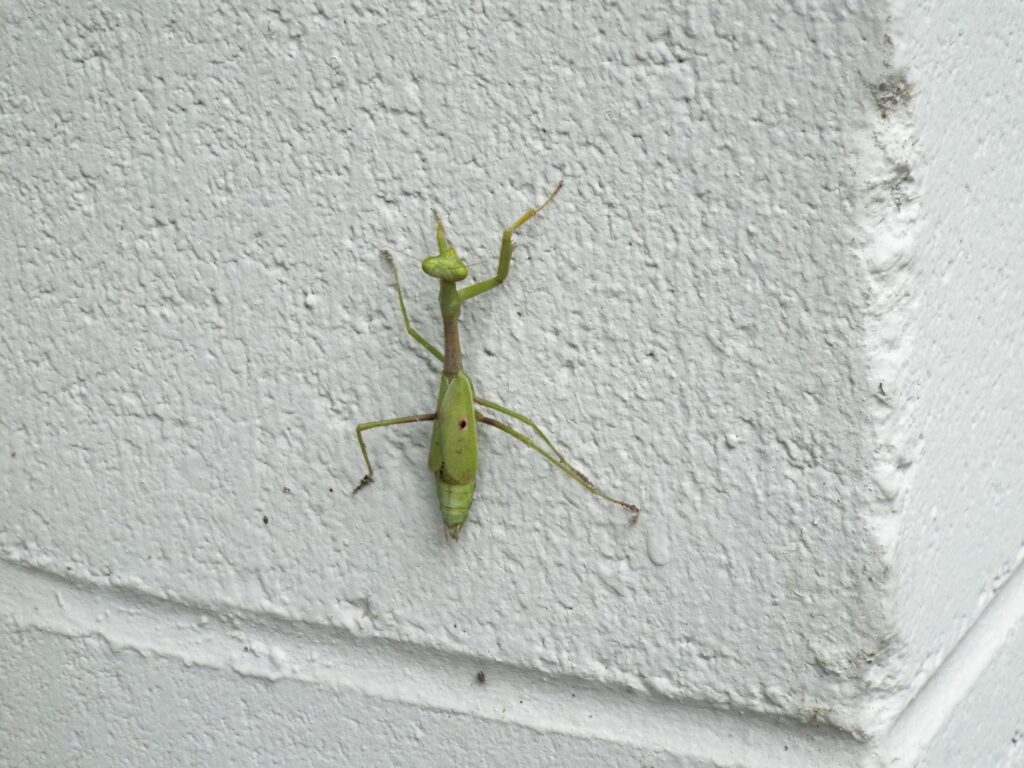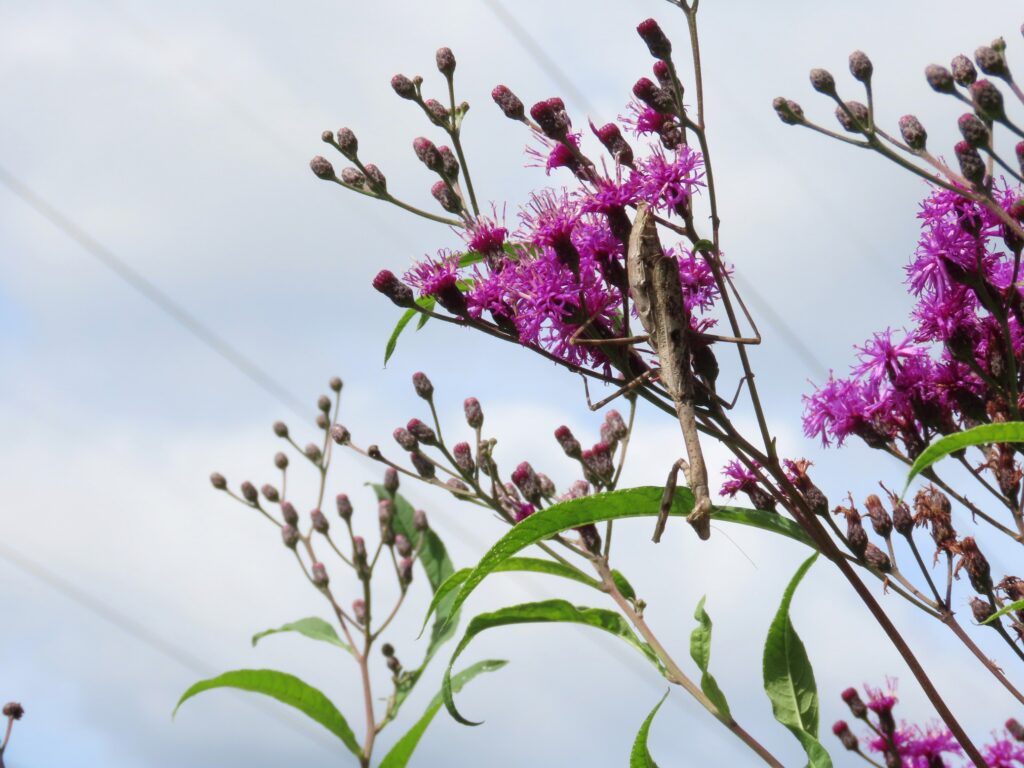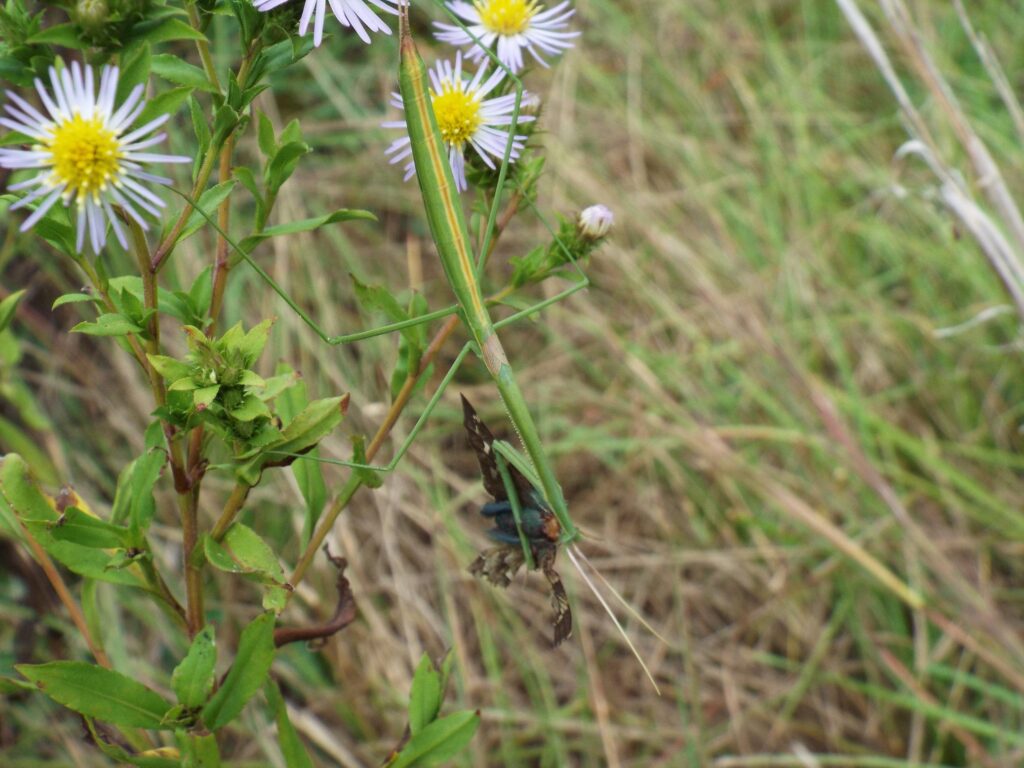





This week for Flora and Fauna Friday it’s a theocratic trio of insects native to our state, the Carolina Mantis (Stagmomantis carolina), Brunner’s Mantis (Brunneria borealis), and Grizzled Mantis (Gonatista grisea).
As alluded, we have three species of mantis native to South Carolina. Each with their own unique appearance and behaviors. There is also a fourth non-native species, the Chinese Mantis (Tenodera sinensis) that can occasionally be found in our county but is usually limited to the upstate. As a whole, Mantids are easily identified by their long, thin bodies, triangular heads, and their arm-like forelegs that are specialized for grasping rather than walking. Mantids earned the common name of Praying Mantis due to their style of ambush hunting that involved standing motionless with their arms folding up and held to their chin, like someone deep in prayer. Each of our three Mantids employ this same style of ambush hunting, lying in wait in a likely spot and praying something tasty comes along, but each has their own habitat specialization.
The Carolina Mantis is our most common Mantis by far. During the early fall, adult Carolina Mantises can often be found clinging to handrails, car windows, and tree trunks as they go about searching for mates or places to lay eggs. They come in two primary colors, emerald-green and blotchy ash-gray, as well as intergrades between the two. Males are smaller and narrower with well developed, rectangular wings. Females are larger with a large, teardrop-shaped abdomen and stubby wings. Carolina Mantises can be found in a wide array of open and brushy habitats and are particularly well suited to living in yards, gardens, parking lots, and fields.
The Brunner’s Mantis is much less common and markedly different in appearance than the Carolina Mantis. The Brunner’s Mantis has an elongated, spindly body and legs with dainty arms and a small head. At first glance they’re almost indistinguishable from a stick-bug. Brunner’s mantises come in a shade of lime-green or hay-tan, sometimes with accents of the other. They primarily inhabit meadows, fallow fields, and grasslands where they cling to flowers and ambush pollinating insects.
The Grizzled Mantis is more similar in body shape to the Carolina Mantis but with notable exceptions. Their body is flat and broad, legs splayed, and they hold their arms to their sides. They come in camouflaged coat of grays, browns, and pale greens and often resemble pine-bark or lichens. Grizzled Mantises are found in forests where they lie in wait on tree bark. They will occasionally hang out on houses as well, lying in wait beneath porch lights for misguided moths.
If you’re curious, the Chinese Mantis will either be lime-green or a flat-brown but will always have a vibrant green streak exposed down the edge of the forewing with a fine white border and the females will have wings that extend well beyond their abdomen, unlike the Carolina Mantis. Males of the two can be a little trickier to tell apart but Carolina Mantis males tend to have dark gray wings and usually do not to have the exposed green forewing edge. The Chinese Mantis shares a similar habitat to the Carolina Mantis but is most often encountered in urban areas in the Lowcountry, where it gets reintroduced but does not do well in our hot and humid climate.